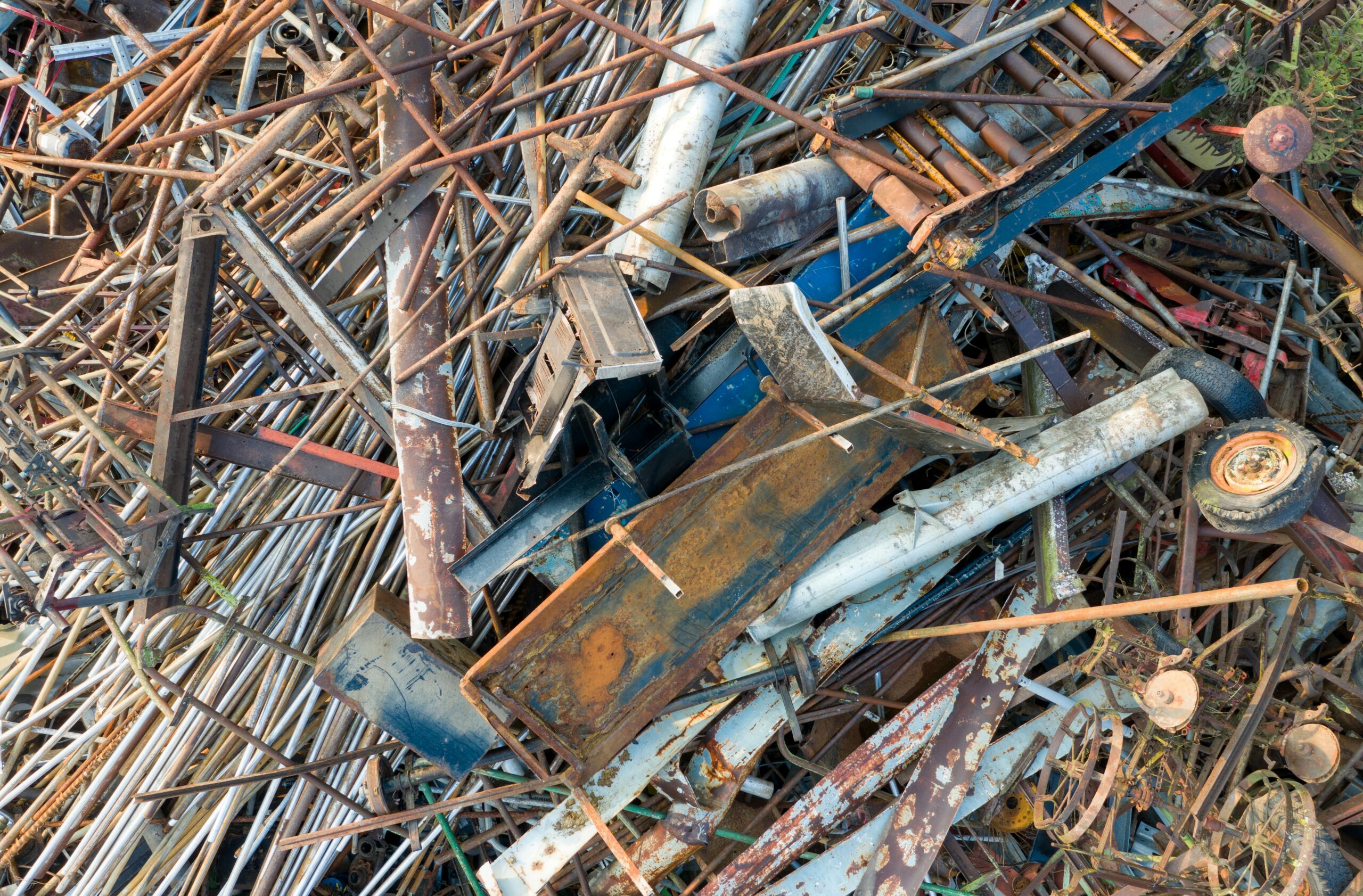5901 Botham Jean Blvd, Dallas, TX 75215
How to Scale Community Scrap Metal Drop-offs: An Introduction
May 7, 2025Over 9 million tons of metal waste end up in American landfills each year. This staggering amount represents valuable resources that could be recycled instead of wasted. Community scrap metal drop-off programs offer a practical solution to this environmental challenge.
These programs establish convenient locations where residents can bring unwanted metal items for recycling. The concept is straightforward yet powerful. Metal items that might otherwise be discarded permanently get a second life through the recycling process.
Community scrap metal initiatives provide multiple benefits. They divert valuable materials from landfills and conserve natural resources by reducing the need for mining raw materials. They also lower greenhouse gas emissions compared to producing new metal. Beyond environmental advantages, these programs strengthen local economies by creating jobs in the collection, processing, and manufacturing sectors.
How Can You Make Scrap Collection Convenient and Accessible?

Convenience is crucial for any successful scrap collection program. When participants can easily drop off materials, participation rates increase. Choosing strategic locations significantly impacts program effectiveness and community adoption.
Strategic Location Placement
Community-centered locations are ideal collection points. Schools, churches, community centers, and public spaces attract regular foot traffic and provide the visibility needed for sustained program awareness. These familiar settings help normalize recycling behaviors.
Municipal partnerships can greatly expand location options. Many successful programs collaborate with local governments to establish drop spots at existing waste facilities. This integration makes recycling a natural extension of current habits rather than an additional task.
When planning drop-off points, prioritize large, open areas that accommodate various vehicle sizes. This design allows for quick, hassle-free material drop-offs and prevents congestion during peak times.
- High visibility areas with existing traffic patterns
- Easily accessible locations with ample vehicle space
- Community-focused sites like schools and public spaces
- Integration with existing waste facilities
- Safe distance from high-traffic pedestrian areas
Accessibility Requirements
True accessibility goes beyond convenience. Consider proximity to public transportation to serve residents without personal vehicles. All collection points should comply with ADA standards, featuring smooth paths, appropriate ramp access, and obstacle-free zones.
Physical layout significantly affects user experience. Position collection containers in visible locations with enough space for multiple users simultaneously. The design should include adequate turning radius for vehicles, minimized wait times through efficient layout, and weather protection where feasible.
Safety considerations are crucial for accessibility. Keep drop-off points at least 30 meters away from bus stops, road junctions, and pedestrian crossings to ensure smooth traffic flow and minimize safety risks.
Communication Elements
Even perfectly located drop-off points fail without proper communication tools. Install prominent, weather-resistant signage with simple instructions and clear visuals showing acceptable materials. Color-coding collection bins simplifies the process for users navigating multiple material streams.
Consistent operational hours build reliability into your program. Residents develop recycling habits based on predictable access. Weekend and evening availability is especially important for working professionals unable to visit during standard business hours.
Digital tools complement physical infrastructure effectively. Mobile applications can help users locate and access stations while providing real-time updates about operational hours and accepted materials. These digital solutions create a seamless experience that encourages regular participation.
The Town of Saugerties exemplifies an effective location strategy by positioning their drop spot at the existing town transfer station. This integration leverages established waste disposal habits, making scrap recycling a convenient extension rather than a separate errand. The clearly marked area features consistent hours aligned with transfer station operation, maximizing accessibility for residents already visiting the facility.
| Key Factor | Description |
| High Visibility | Locations should be easily noticeable to encourage participation. |
| Vehicle Access | Sites must accommodate various vehicle sizes for easy drop-offs. |
| Proximity to Traffic Patterns | Locations should align with existing traffic to ensure convenience. |
| Accessibility | Consider proximity to public transportation and ADA compliance. |
| Partnerships | Collaborate with local organizations to expand location options. |
| Clear Signage | Install weather-resistant signs with simple instructions. |
| Consistent Hours | Ensure reliable operational hours to build participant habits. |
What Strategies Can Educate and Motivate Participants?
Visual Guides and Clear Signage
Education is crucial for a successful scrap metal drive. Clear visual guides showing acceptable materials help avoid contamination and confusion. Color-coded systems enable quick identification, even for those new to recycling.
Simple, approachable signage works best at collection points. Photos of common items with text descriptions eliminate guesswork about recyclable metals. This clarity builds participant confidence and improves collection quality.
Consider providing take-home reference materials like refrigerator magnets or pocket guides that participants can consult before bringing materials to collection sites. These practical tools serve as constant reminders while enhancing recycling knowledge.
Interactive Learning Approaches
Traditional educational methods often fall short in teaching recycling concepts. Interactive approaches create memorable experiences that enhance material retention and participation rates.
The ‘Metal Detective’ game offers an engaging introduction to scrap metal identification. Participants receive common household items and must determine which contain recyclable metals. Using magnets and basic techniques, they separate valuable scrap from non-recyclable items.
Short video demonstrations showing the metal recycling process help participants understand what happens after collection. These videos create a powerful link between individual actions and environmental benefits, motivating ongoing participation.
Hands-On Workshops
Practical workshops provide valuable hands-on experience with metal identification and preparation. These sessions turn abstract recycling concepts into tangible skills that participants can apply immediately.
Workshop leaders can demonstrate proper techniques for preparing scrap metals. This includes removing non-metal components, separating different metal types, and safely handling potentially hazardous materials.
Consider partnering with local technical schools or community colleges to host these workshops. Their facilities often include the necessary safety equipment and expertise to create effective learning environments.
Community Competition
Friendly competition turns recycling from an individual choice into a community effort. Competition frameworks create social motivation that significantly boosts participation rates.
Neighborhood challenges work particularly well for scrap drives. For example, a “Metals Month” competition could track pounds of scrap collected by each neighborhood, with weekly updates shared through social media and community bulletin boards. The winning area receives recognition through a community celebration and possibly funding for a neighborhood improvement project.
School-based competitions leverage existing social networks and create educational opportunities. Students can track collection progress using visual tools like thermometer charts or digital leaderboards. This visible progress tracking maintains momentum throughout the drive.
Meaningful Incentives
Strategic incentives can significantly boost participation without undermining the environmental message. The key is selecting rewards that align with sustainability values.
Consider recognition-based incentives like featuring top participants in local media or hosting appreciation events. These approaches build community pride while highlighting recycling champions.
Financial incentives work well when they benefit community projects rather than individuals. For instance, proceeds from a scrap drive could fund playground equipment, community gardens, or environmental education programs that benefit everyone.
Educational incentives like scholarships or school supplies connect recycling efforts directly to community improvement, reinforcing the value of environmental stewardship.
Digital Engagement Strategies
Modern recycling education extends beyond physical materials into digital spaces. Strategic use of digital tools expands reach and enhances educational impact.
Social media campaigns sharing recycling success stories create community momentum. Regular posts highlighting collection milestones and participant achievements maintain interest throughout the drive.
Mobile applications can provide real-time information about collection locations, acceptable materials, and drive progress. These digital tools make participation more convenient while reinforcing educational messages.
Email newsletters and text updates keep participants informed about collection schedules and special events. This consistent communication maintains engagement and prevents participation drops.
How Can Community Involvement Boost Scrap Drive Success?

Community involvement is crucial for successful scrap drive initiatives. When residents unite around environmental goals, participation rates and collection volumes increase significantly. The key is to create structured opportunities that make recycling both accessible and rewarding for everyone involved.
Create Dedicated Recycling Clubs
Recycling clubs turn occasional scrap drives into ongoing community efforts. These groups form a core team of committed individuals who champion recycling initiatives throughout the year, maintaining momentum between larger collection events.
These clubs can operate through local community centers or schools, serving as hubs for education and engagement. Members gain specialized knowledge about materials recovery and proper sorting techniques, becoming valuable resources for neighbors with recycling questions.
Regular meetings sustain interest and allow clubs to plan strategic collection events that address specific community needs. These teams create a sense of identity around environmental stewardship that extends beyond individual households.
Set Clear, Measurable Goals
Effective scrap drives require concrete targets. Establish specific collection goals for materials like aluminum, steel, or electronics. Public tracking methods build momentum and encourage healthy competition.
Transparent goal-setting demonstrates the tangible impact of community efforts. When residents see progress toward collecting 500 pounds of aluminum or 1,000 electronic devices, their motivation increases. Success becomes visible.
Track and share progress regularly through community newsletters, social media, or prominent displays at collection sites. This visibility reinforces the collective impact of individual actions and spurs continued participation.
Leverage Volunteer Engagement
Create varied volunteer roles that match different skills and availability. Collection site monitors ensure proper material sorting. Educational ambassadors spread awareness about acceptable materials. Logistics coordinators handle transportation details.
Volunteers are the human face of recycling initiatives. Their enthusiasm inspires others to participate, explaining the importance of proper sorting and helping overcome participation barriers.
Provide brief training sessions for volunteers to ensure they understand guidelines and can answer common questions. Recognition programs acknowledge their contributions and help maintain their commitment to the cause.
Collaborate with Local Government
Government partnerships provide legitimacy and resources critical for scrap drive success. Local authorities can offer collection sites, transportation assistance, and promotional support through official channels.
These collaborations help establish proper protocols for handling different materials, ensuring compliance with waste management regulations. Official backing increases community confidence in the initiative.
Government partnerships also create pathways for recyclables to enter proper processing channels, maximizing the environmental benefit of collection efforts. Many municipalities can provide equipment or staff support to enhance volunteer capabilities.
Build Sustainable Engagement
Maintain community interest through regular communication about environmental impact. Share success stories that highlight how collected materials benefit the community. Create opportunities for deeper participation beyond simply dropping off materials.
Sustainable engagement transforms scrap drives from isolated events into integral parts of community identity. Regular workshops and educational programs deepen understanding of waste reduction principles, extending the impact beyond collection days.
Recognize contributors publicly through social media, local newspapers, or community events. These acknowledgments reinforce the value of participation and inspire others to join the effort.
| Volunteer Role | Responsibilities |
|---|---|
| Team Leaders | Organize and oversee volunteer teams, ensuring tasks are completed efficiently. |
| Safety Officers | Ensure safety protocols are followed during collection events. |
| Waste Coordinators | Manage waste sorting and ensure proper disposal of non-recyclable materials. |
| Collection Site Monitors | Assist residents with sorting materials and reduce contamination issues. |
| Drivers and Pickup Teams | Help transport materials for elderly or disabled residents. |
| Educational Ambassadors | Conduct workshops on recycling practices and educate participants. |
Conclusion: Transforming Scrap Drives into Community Success
Scaling community scrap metal drop-offs requires careful planning, dedicated community involvement, and ongoing education. By prioritizing convenience, accessibility, and engagement, communities can establish effective programs that divert significant waste from landfills. These initiatives foster environmentally conscious communities through shared responsibility and create tangible benefits, including resource conservation, reduced greenhouse gas emissions, and enhanced community pride.
To implement a successful community scrap metal program, focus on strategic location selection, clear communication, and continuous community education. Building a strong foundation of volunteers and partnerships with local organizations will ensure your program thrives and creates a lasting environmental impact. Contact Okon Recycling at 214-717-4083 for guidance on establishing or improving your local scrap drop-off program.
